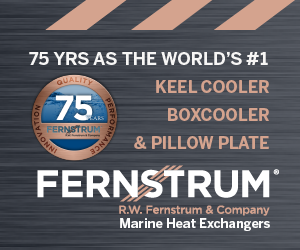Tale of Two Funds: Let IWTF, HMTF Be Fully Used
Ports and inland waterways benefit from two similar capital funds. Both were created by Congress as a reasonable way of having beneficiaries of public port and waterway infrastructure pay for part of their costs. Yet both have been allowed to accumulate surpluses, even while the desperate infrastructure and maintenance needs they were intended to fund continue to go begging.
In 1978, Congress created the Inland Waterways Trust Fund (IWTF) as part of the Inland Waterways Revenue Act of 1978, funded by a fuel tax paid by barge operates that has increased several times over the years—the last increase requested by the operators themselves.
During an unfortunate seven-year gap (2000–2007) between Water Resources Development Acts (WRDAs), which authorize projects on which so spend these funds, the tax was collected, and interest accrued, but no dollars were expended. During this period, some politicians noticed that the fund’s surplus could, on paper at least, offset deficits in other areas of the budget. Despite some recent welcome reforms in how IWTF money is used, the barge industry is still arguing for its full utilization in the upcoming WRDA.
The U.S. Harbor Maintenance Trust Fund’s (HTMF) tax sources are somewhat different, but its intended use is similar. It is an “ad valorem” tax on cargo originally enacted by Congress in the Water Resources Development Act of 1986. Originally set at .04 percent of the value of cargo carried on ships, it was increased to .125 percent by Congress. The tax is paid by the cargo’s owner rather than the port or vessel owner (except export cargo, which the Supreme Court ruled unconstitutional to tax in 1998). Today, the tax is assessed on internal cargo transported between any two U.S. coastal ports–including Great Lakes ports–and on cargo imported to U.S. ports from other countries.
The HMTF’s sole purpose is to support port maintenance by the Corps, especially by dredging shipping channels. (In the Great Lakes, the Corps also repairs breakwaters and operates the Soo Locks.)
So how is it that some important ports, notably the Port of Corpus Christi, are so impatient about shortfalls in their dredging that they are finding ways to pay for it themselves, even while the HMTF accumulates surpluses?
The problem is that the money in the HMTF (like that in the IWTF) can’t spend itself or be automatically transferred to where it is needed. Instead, Congress must appropriate it in each spending cycle. In 2017, Congress appropriated $1.4 billion for trust fund eligible expenses. At the beginning of calendar year 2018, there was a surplus of about $9 billion in the HMTF.
The American Association of Port Authorities (AAPA) has proposed a simple solution: simply transfer HMTF revenues automatically and directly to the Corps and allow them to be spent for their intended purpose. The AAPA has a preferred three-phase spending plan, which it spent a lot of time and effort getting its member ports to agree to. According to this plan, in the initial phase, HMT revenues up to $1.58 billion would be provided directly to the Corps. Of this amount, 90 percent would be spent on dredging, spread out fairly among all ports, while 10 percent would be returned via services to those high-volume “donor” ports that pay a disproportionate share of taxes.
In the intermediate phase, revenues over $1.58 billion would be divided 85/10/5, with 10 percent going to donor ports and 5 percent to energy ports. As shipping channels improve, and the need stabilizes, those percentages would shift to 80/10/10 in the fully maintained phase.
Everybody on all sides agrees that the need for a better funding mechanism for both inland waterways and port infrastructure is urgent. You’d think that Congress could get behind a plan that increases desperately needed infrastructure spending without raising any new taxes.



